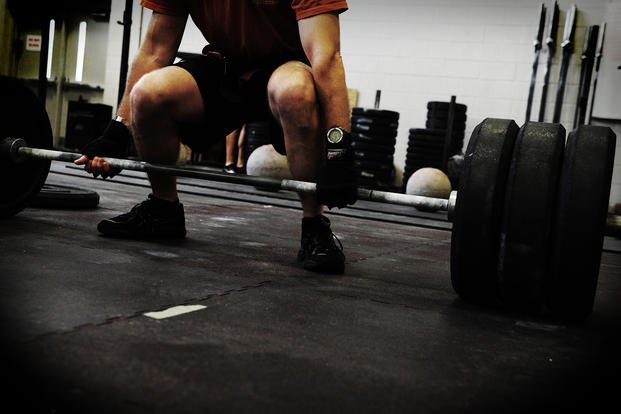When developing training programs for yourself or a group of people to follow, consider what I call the three rules of tactical fitness:
1. What are your training goals? (selection, basic training, maintenance, strength, power, endurance)
2. What are your weaknesses/strengths? (elements of fitness -- see below)
3. What is your timeline? Is there a set date to be tested?
Here is an email from a member of the Navy seeking to better himself in tactical fitness, which requires getting good at all the elements of fitness -- strength/power, speed/agility, endurance/muscle stamina, flexibility/mobility, grip/hand-eye coordination.
Mr. Smith,
Can you help me better understand the difference between power and absolute strength when involving weights? I am giving myself 12 weeks to put on mass, add strength, but also stay in shape for PFTs. After several weeks of doing a hypertrophy strength training/absolute strength phase, can you work on pushing movements in a way that promotes power? Like doing a push-up, DB/barbell bench presses or shoulder pressing movements? Here is my idea:
6 weeks -- strength(hypertrophy), transitioning into absolute strength by week 6 (all weights) long-distance running progression, transitioned into a little more advanced long runs by week 6.
3 weeks -- weight and calisthenics split, using weights that work the full body and moderate volume of calisthenics. Getting away from long-distance running and using agility and speed training.
3 weeks all calisthenics with long-distance running fewer times a week but more lengthy runs. I’ll adjust or add, if needed.
Sounds like a form of a periodization plan to me. I typically make 12-week cycles as well and will add in elements of fitness blocks into a cycle if I see them needing attention. For example, adding in some goal-pace PFT running during a winter lift cycle if times are falling too much or adding weight supplements to high-repetition calisthenics phases to work on some strength goals. Just from my experience, it is difficult to gain weight (add muscle) while on a long-distance running program, and it is difficult to get faster in timed runs while in the middle of a heavy lifting cycle.
The elements that tend to work best together are the following:
Strength and power, as well as speed and agility, can advance together in a cycle.
Longer-distance cardio endurance and muscle stamina (calisthenics -- high reps) do best when not trying to get better at one-rep max (1RM) lifts.
Flexibility/mobility should not be neglected in any cycle.
Grip can be worked throughout the cycles by lifting (deadlifts) or high-rep pull-ups/rope climbs.
But to answer your questions specifically:
Absolute strength is the maximum amount of force exerted on an object. Greater amounts of absolute strength favor those with higher body weight and, in general, larger individuals. An example is your one rep max lift on any lift. Power has a speed component: power = force x speed. Power is how fast you can do the rep. Yes, bench presses, overhead presses and even push-ups can build pushing power by exploding to the up position in these lifts (concentric movement).
My recommendation is not to waste too much time debating on how to do it, but go do it once you think you have a plan. Testing a cycle out to see whether a program will work for you. Then, you can cycle out of it when you stop seeing results instead of getting paralysis by analysis.
It's better to see what works best for you through tests, versus theorizing how to arrange the perfect 12-week plan, because you may find you respond to a certain stimulus better than another. My advice is to keep going with what works for you. Ditch what is not working for your goals, strengths and weaknesses, and timeline.
Absolute strength is that force in the above power equation.
Stew Smith is a former Navy SEAL and fitness author certified as a Strength and Conditioning Specialist (CSCS) with the National Strength and Conditioning Association. Visit his Fitness eBook store if you’re looking to start a workout program to create a healthy lifestyle. Send your fitness questions to stew@stewsmith.com.
Want to Learn More About Military Life?
Whether you're thinking of joining the military, looking for fitness and basic training tips, or keeping up with military life and benefits, Military.com has you covered. Subscribe to Military.com to have military news, updates and resources delivered directly to your inbox.
















